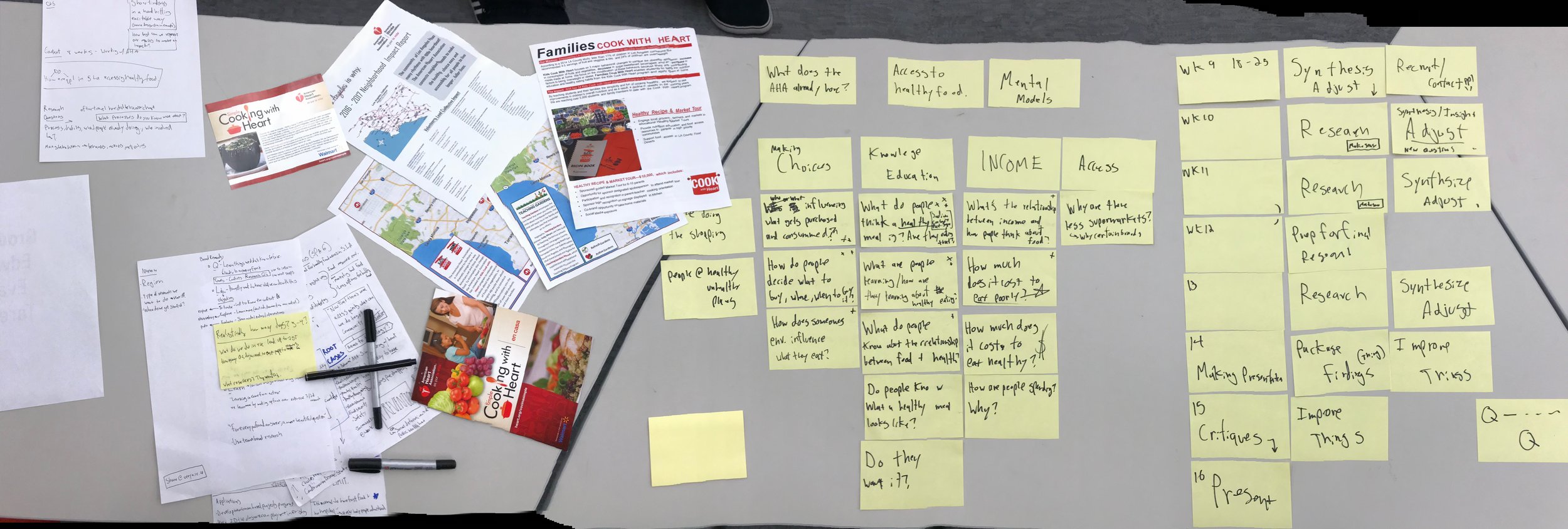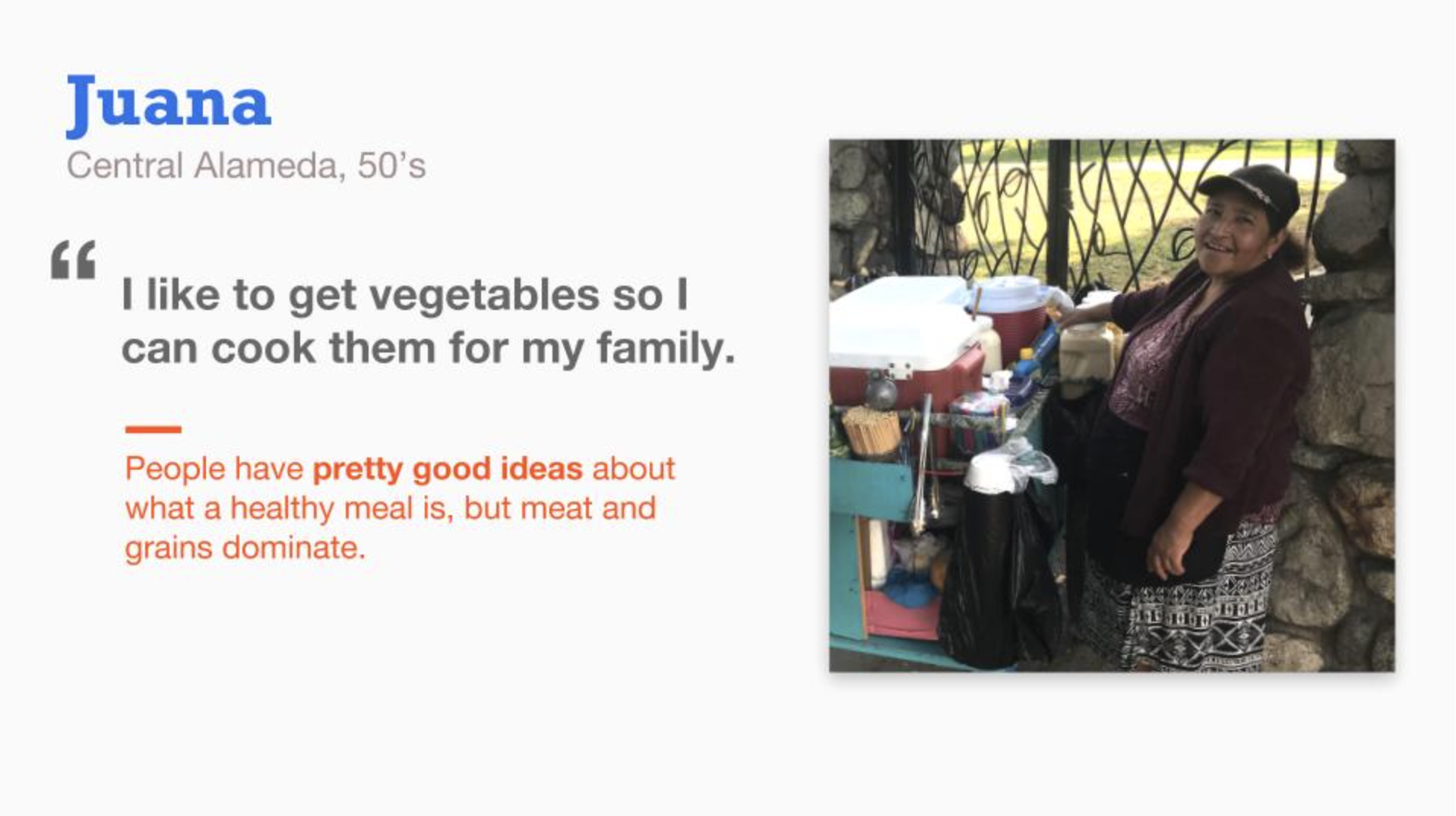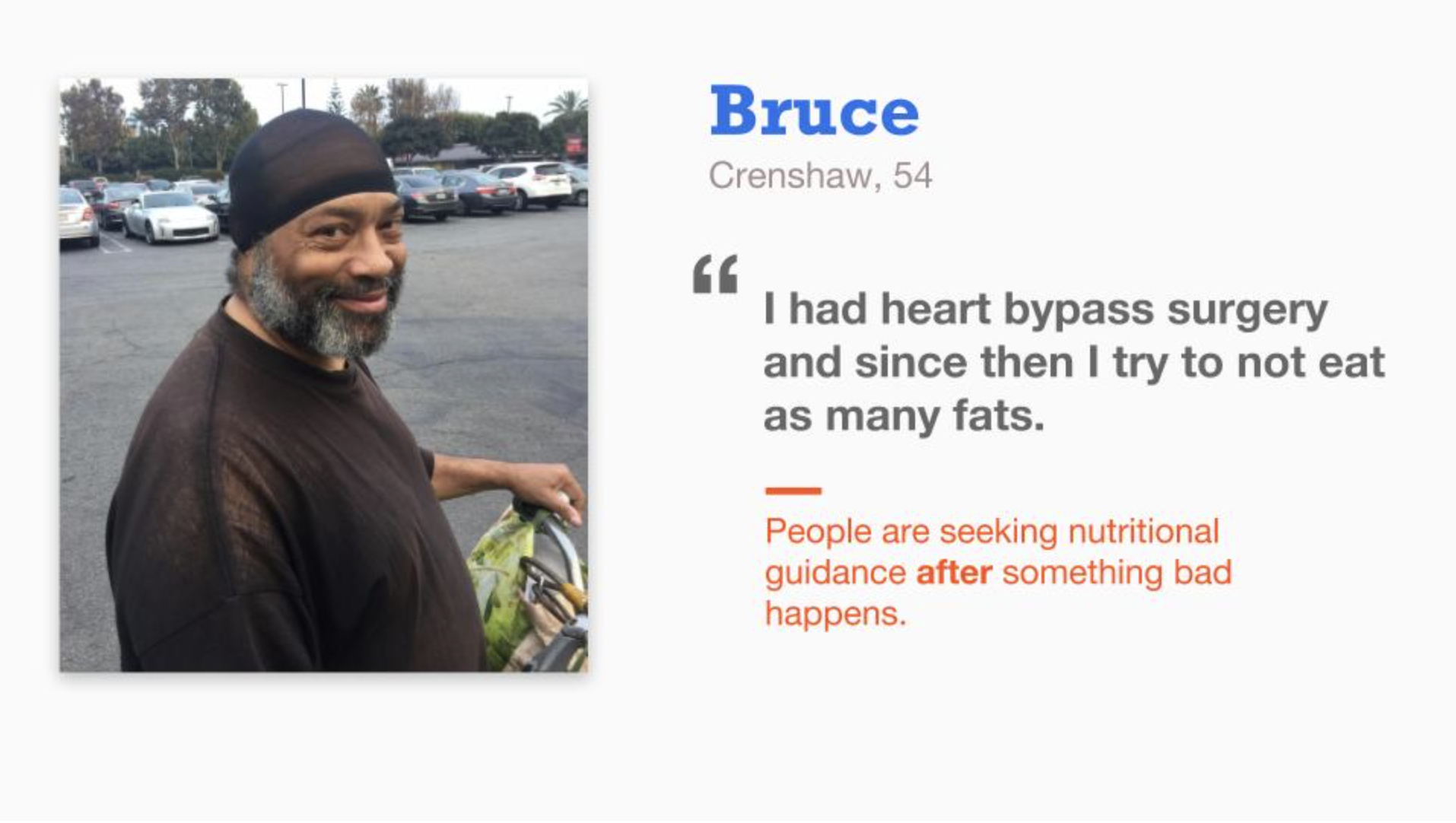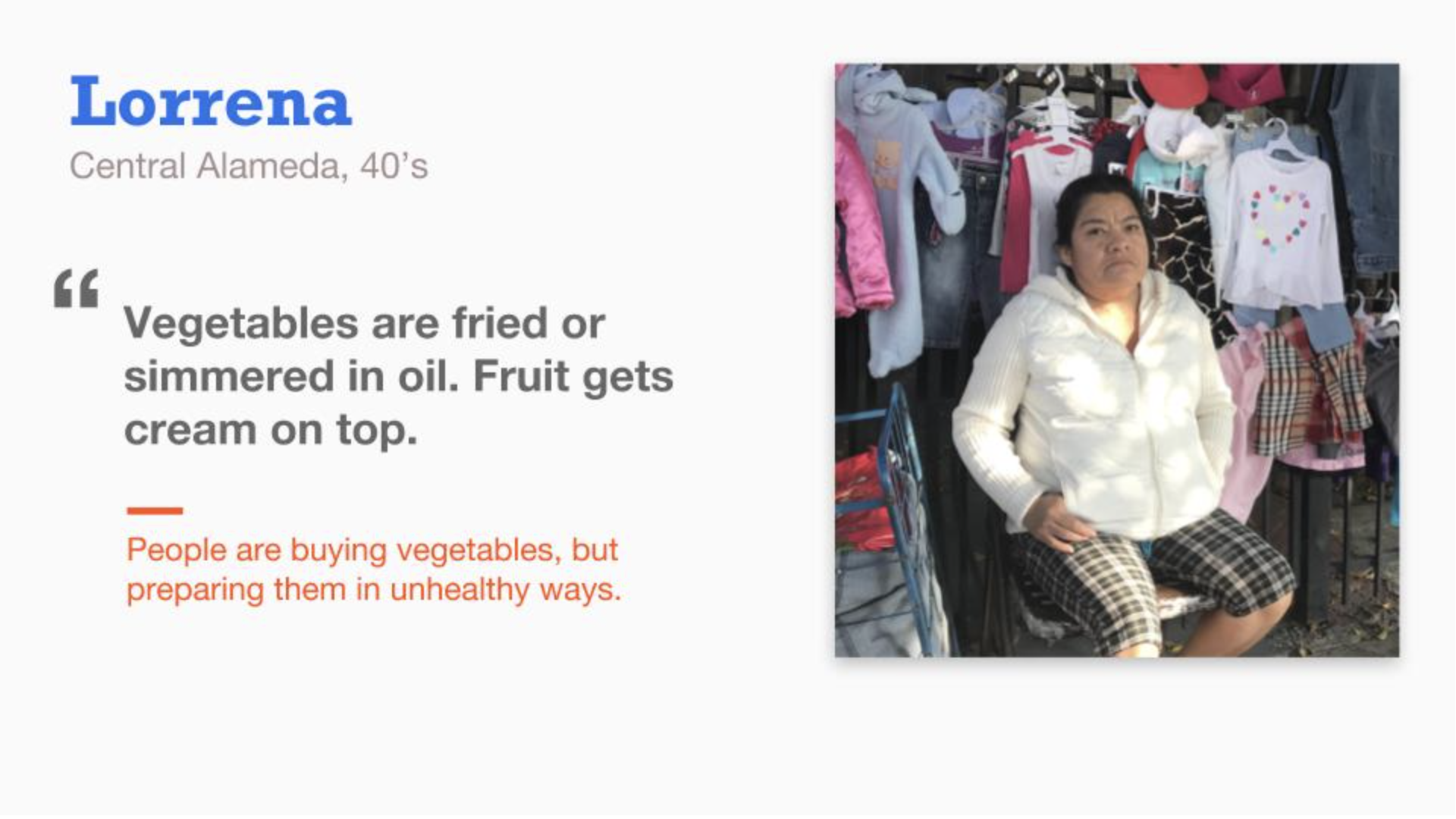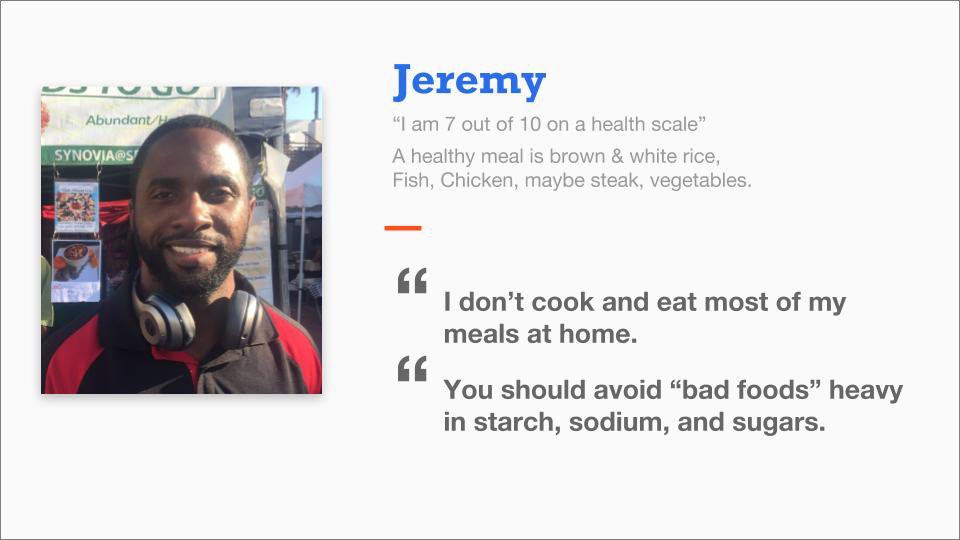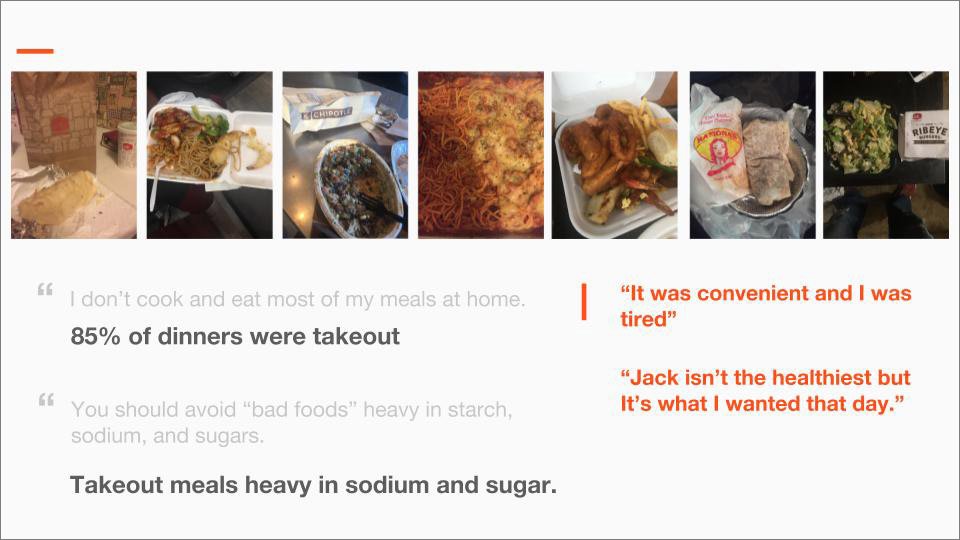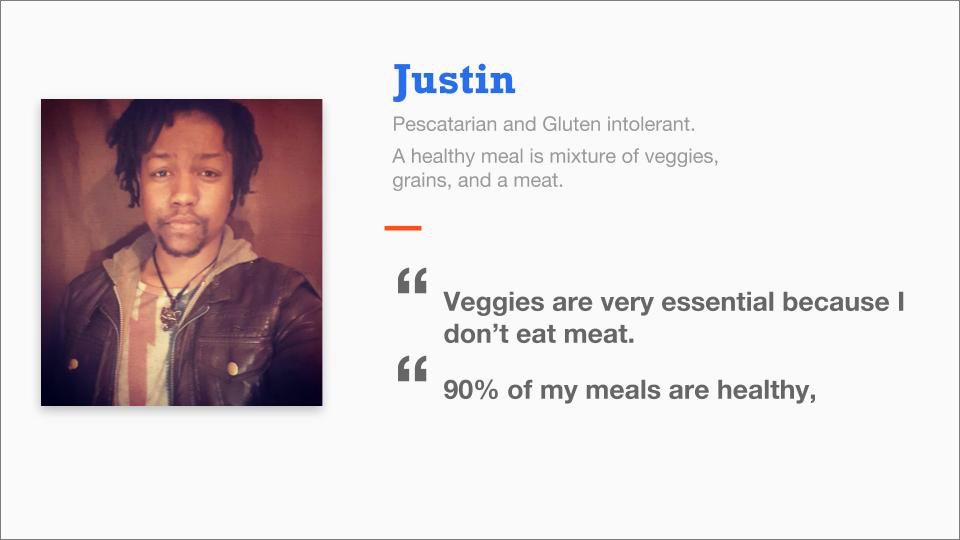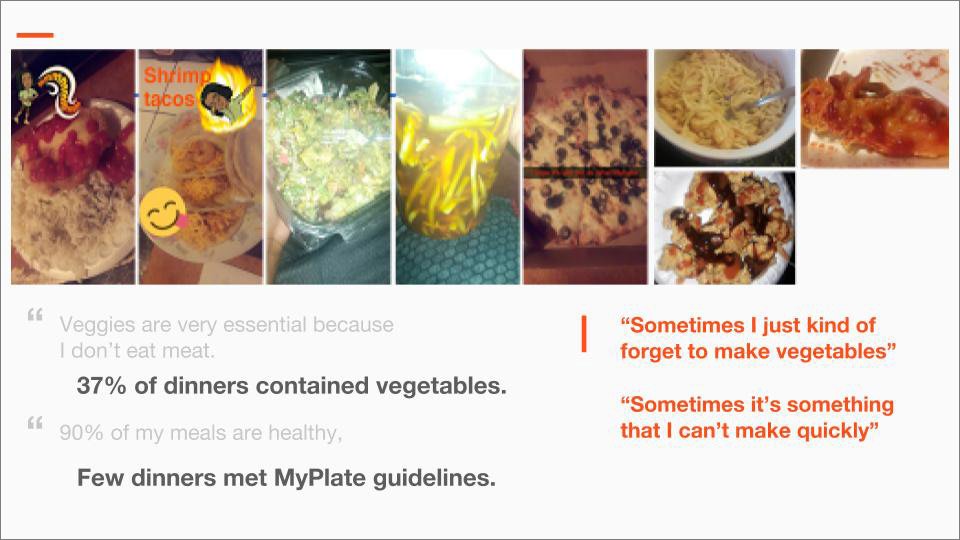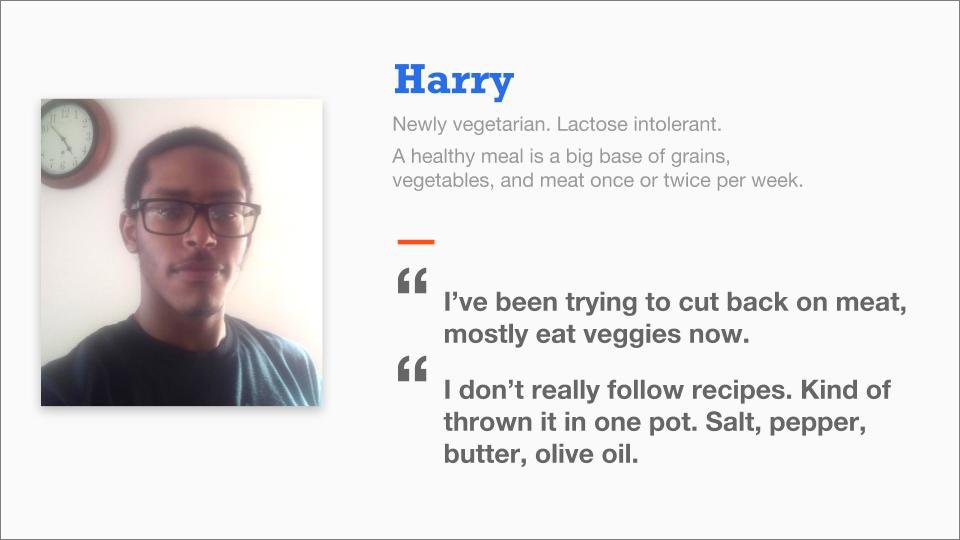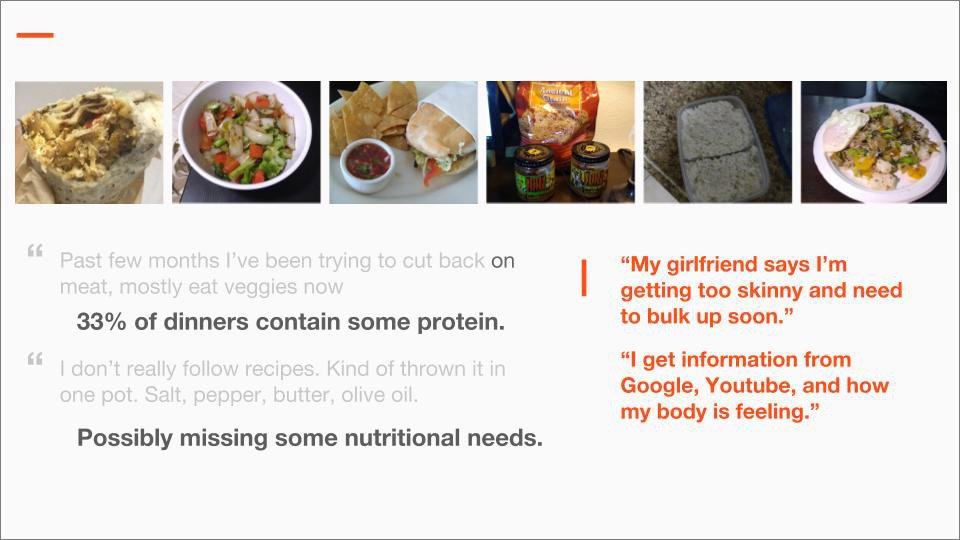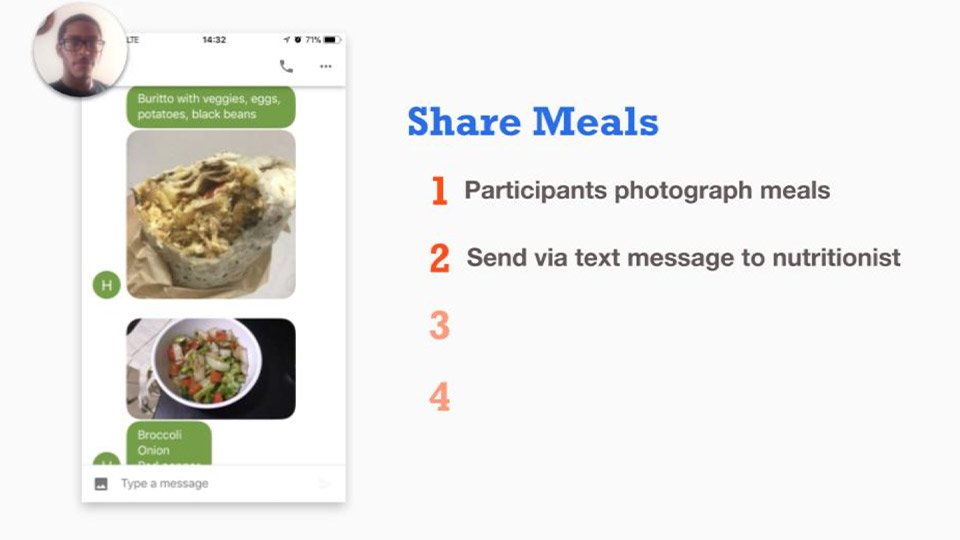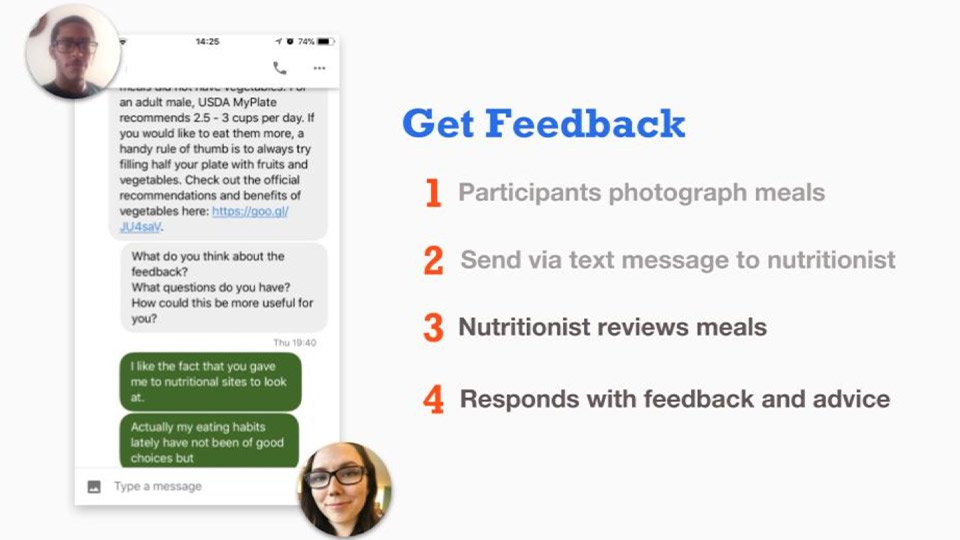UX Research
Nutrition Research
Context
Conducted research about eating habits in South Los Angeles. Conceptualized text message food feedback, and presented findings to the American Heart Association.
Problem
South Los Angeles is a food desert with limited access to fresh, healthy, foods. Life expectancy differs by more than 20 years for people living just 5 miles apart.
Approach
Understand eating habits by speaking with residents in South Los Angeles.
Team
Tarelle Butts, Evan Pierre, Edwin Rodriguez
My Role
Affinity Map Development, Read Government Agency Journals, User Research, Synthesize Data, Present Findings
Empathize
We began our research by creating an Affinity Map about what questions we wanted answered. We decided to focus on learning what the official definition of a "healthy meal" is, how residents of South Los Angeles defined a healthy meal.
Tarelle Butts (left), Evan Pierre (right), brainstorming and working on the affinity map
Brainstorming and affinity mapping
Edwin Rodriguez (left) with an interview participant in the field
What is a Healthy Meal
We researched what the official definition of a healthy meal is and found United States Department of Agriculture's Myplate. This is the most up to date version from the US Government, it replaces the food pyramid which is what many older people were taught. We decided to use this definition in our project as a benchmark of a healthy meal because despite the recommendations being specific, it’s designed to be used as a simple rule of thumb.
field Research
As we moved toward primary research we knew that we wanted to understand how decision makers who control what is purchased, cooked, and eaten think and talk about “healthy meals”. To get a diverse range of perspectives we visited two different communities, Crenshaw and Central Alameda. The Crenshaw community is predominately African American and Central Alameda is predominately Hispanic.
Map of South Los Angeles
insights From Field Research
People are buying vegetables, but preparing them in unhealthy ways, this really stood out to us. In our interviews we had been asking people about their grocery lists, it dawned on us that it doesn’t matter if you buy vegetables if at the end of the day you end up frying your vegetables or putting heavy cream on your fruit. We realized that we need to know what exactly is on their plates, this will allow us to make a comparison between the official definition of a healthy meal, how residents define a healthy meal, and what they are actually eating.
define the problem
People are buying vegetables, but preparing them in unhealthy ways
Ideate
We needed to know what residents are actually eating. To do this, we decided to recruit residents of South Los Angeles and ask them to document their dinner for 1 week by taking pictures of the meal. We made a conscious decision to not tell the participants what the photos would be used for. We wanted to keep their documentation as pure as possible and not let them know we would be analyzing their photos for healthy and unhealthy dinner choices.
Photo journal of food
Why Dinner
We focused on dinner because research suggests it’s the meal where people consume the most vegetables which was a food group we wanted to look into. We also assumed dinner was least likely to be skipped and would be easiest to photograph for participants.
Dinner is the meal where people consume the most vegetables
Meet our Participants
Jeremy Insights
Jeremy told us that he doesn’t cook and eats most of his meals at home. He also told us that you should avoid bad foods heavy in starch sodium and sugars. Despite what he said, about 85% of his dinners were takeout. And those takeout meals from their appearance seem to be heavy in sodium and sugar. We talked to him about it and he told us that he was tired and it was convenient to buy fast food. He also mentioned that he knows Jack isn't the healthiest, but it’s just what he wanted that day.
Justin Insights
Justin, a pescatarian, told us that veggies are essential for him because he doesn’t eat meat. He also mentioned that he considers about 90% of his meals to be healthy. When Justin shared his photos with us, we saw that only about 37% of his dinners contained vegetables and that few of them met MyPlate guidelines for a balanced meal. We talked about it, and he said that sometimes he just kind of forgets to make vegetables, and that life is moving really fast for him. Justin added that sometimes vegetables are something that he can’t make quickly so it just doesn’t happen.
Harry Insights
Lastly we talked to Harry, he’s newly vegetarian and said he’s been trying to cut back on meat and eats mostly vegetables now. He doesn’t follow recipes, but does get ideas about what to eat from google, youtube, and how his body is feeling. When cooking, Harry doesn’t really follow recipes and kind of throws it in a pot with salt, pepper, butter, and olive oil. We noticed that only about 33% percent of his dinners contain some protein. This coupled with following his intuition to cook over recipes made us wonder if he was missing some nutritional needs. We talked about it and he told us that his girlfriend does say that he’s getting too skinny and needs to bulk up soon.
Personalized feedback about meals
prototype
If recipes won’t be helpful, and people are going to eat out anyways, how could we support them making better choices around mealtime? We realized that we had these photos, and we had access to a nutritionist who had helped us analyze the photos. Could personalized feedback about meals help improve eating habits? A convenient place where people can get personalized feedback about their meals, and tips to make healthier choices.
This materialized as the concept of Text Message Food Feedback.
Meet our Nutritionist
Before doing this we consulted more with our nutritionist, Tanya, who has one year before she will be a fully registered dietician. She gave us some really helpful guidance, like the fact that we cannot give medical advice in any way, and that also there are limits to what you can tell about a person's diet by only having photos of their dinner. As an RD she would use other methods about their food. She did say that if we did give feedback, it would need to be general and point people to official resources that they can read on their own.
Tanya, 1 year from being coming a registered dietician
usability Testing
To test our prototype, we showed Tanya the photo journals of each participant. Tanya made observations and gave feedback specific to each participant's eating habits. Tanya mentioned "USDA MyPlate has a helpful guide to help choose things to eat when away from home," along with a PDF linking to the official recommendation. Within the conversation handy rules of thumb were included, like always try filling half your plate with fruits or vegetables. This is something that also came from official guidelines.
Testing our prototype
usability Testing insights
We got positive responses to the feedback. Jeremy felt he could use these resources to position himself to greater health in the future, and justin said the information you provided was amazing and will definitely be taking all of the advice given.
Usability testing insights
Reflections
It is encouraging to get positive feedback on the first try. We see a lot of benefits in a service like this. Free on demand easy access to professional feedback can be useful whether you are cooking at home or eating out, especially if it’s personalized. Also the act of taking photos of your food for a week can spark self reflection about what you are eating.
This service could potentially be anonymous, which might encourage them to ask more honest questions than they would otherwise.There are also potential benefit to the American Heart Association. It’s another form of direct support for their mission. If people agree to share their data the American Heart Association could see photos and learn what people are eating and what kinds of questions they are asking in a specific geographic area.


